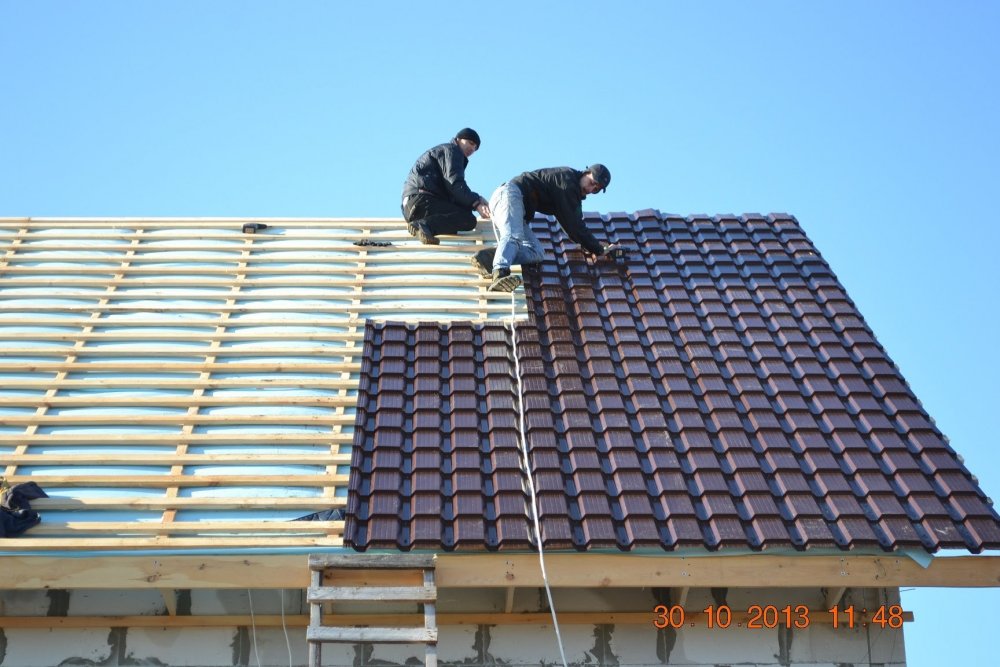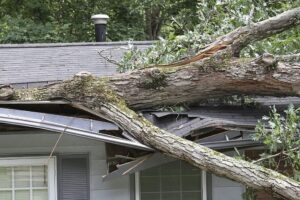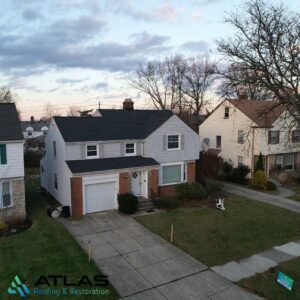A properly functioning roof is the backbone of any commercial building. It shields your business, employees, inventory, and assets from Cleveland’s harsh weather conditions. However, commercial roofs don’t last forever. Over time, wear and tear from snow, rain, heat, and wind can degrade your roof’s structural integrity. Recognizing when it’s time for a roof replacement can save your business money and prevent unexpected downtime. In this blog, we’ll go over the most common signs that it’s time to replace your commercial roof in Cleveland, OH — a city known for its fluctuating weather conditions and seasonal extremes. If you’re searching for trusted help with commercial roofing Cleveland, this guide is the right place to start.
1. The Age of Your Roof
One of the most straightforward indicators is the age of your current roof. Most commercial roofs have a lifespan ranging from 20 to 30 years, depending on the type of materials used and the level of maintenance provided. If your roof is nearing or has surpassed its expected lifespan, replacement should be seriously considered, even if it appears to be functioning adequately. Old roofs are more susceptible to leaks, insulation issues, and structural failures.
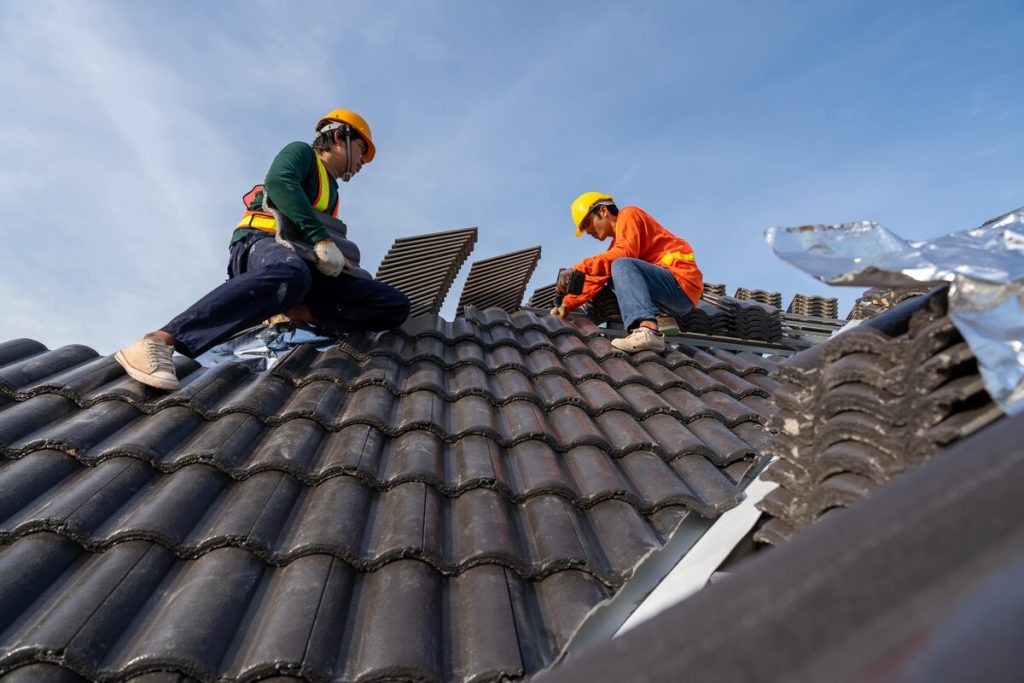
Lifespan by Roofing Material:
- TPO or EPDM roofing: 20–30 years
- Metal roofing: 30–45 years
- Built-up roofing (BUR): 15–30 years
- Modified bitumen: 20–25 years
2. Visible Roof Damage
Visible signs of damage are often early indicators of underlying problems. These include:
- Cracks, blisters, or bubbles on the surface
- Torn or missing membranes
- Warped or rusted flashing
- Sagging or ponding water
These issues can lead to leaks and eventual roof failure. While small areas can often be repaired, widespread damage or frequent repair needs are a clear sign that replacement is the more cost-effective long-term solution.
3. Persistent Leaks and Water Intrusion
A leaky roof isn’t just a nuisance—it’s a red flag. Persistent leaks can damage insulation, cause mold and mildew, and lead to interior water damage that affects your building’s structure and productivity. If you’ve had to repair the same area multiple times or if multiple leaks are developing across your roof, it may indicate that your system is failing overall.
4. Rising Energy Bills
Your commercial roof plays a vital role in insulating your building. As roofing materials deteriorate, they become less effective at reflecting heat or maintaining internal temperatures. If you’ve noticed a consistent rise in your heating and cooling bills, your roof might be to blame. A new roof built with modern, energy-efficient materials can dramatically reduce your utility costs over time.
5. Mold, Mildew, or Foul Odors
Moisture intrusion often results in mold growth within your roofing system or building interior. This not only compromises the building’s integrity but can also cause serious health issues for occupants. If you notice musty smells, dark streaks on ceilings, or visible mold patches, it could mean your roof is allowing too much moisture to penetrate—and may need to be replaced.
6. Structural Issues
Structural sagging or bending in the roof deck or support system is a serious warning sign. This could be caused by water damage, saturated insulation, or a failing support structure. In Cleveland, where snow and ice can accumulate heavily during the winter months, a weakened roof can become a hazard. If any part of your roof is structurally compromised, replacement becomes not just a financial concern but a safety one.
7. Excessive Roof Repairs
Frequent repairs can be a sign of a failing roofing system. If you find yourself patching leaks, replacing sections of membrane, and calling in roofing contractors several times a year, you might be spending more on repairs than you would on a replacement. A roof that constantly needs maintenance is typically nearing the end of its useful life.
8. Roofing Membrane Damage
Flat commercial roofs often use membrane systems like TPO, PVC, or EPDM. Over time, these membranes can become brittle, cracked, or discolored due to UV exposure and extreme weather. If your roof membrane shows signs of aging or damage across large sections, it could be time for a full replacement instead of continued patching.
9. Ponding Water
Water that remains pooled on your flat commercial roof for more than 48 hours after rain or snow is a cause for concern. This condition—known as ponding water—can lead to membrane breakdown, leaks, and structural damage. If ponding is frequent and widespread, it may be a symptom of poor drainage or a failing roof slope, both of which often warrant a replacement.
10. Interior Damage and Ceiling Stains
If you notice water stains on your ceilings or walls, peeling paint, or warped ceiling tiles, it’s likely that water is making its way through the roof. These interior signs are often more telling than external issues and indicate that the roofing system is no longer effective at keeping moisture out.
11. Compliance and Safety Issues
Older commercial roofs may not meet current local building codes or safety standards. When codes are updated (especially regarding insulation, fire resistance, and stormwater management), non-compliant roofs may need to be replaced during major renovations or upon inspection. Replacing your roof with up-to-date materials and systems ensures you’re in compliance and helps avoid costly penalties or forced shutdowns.
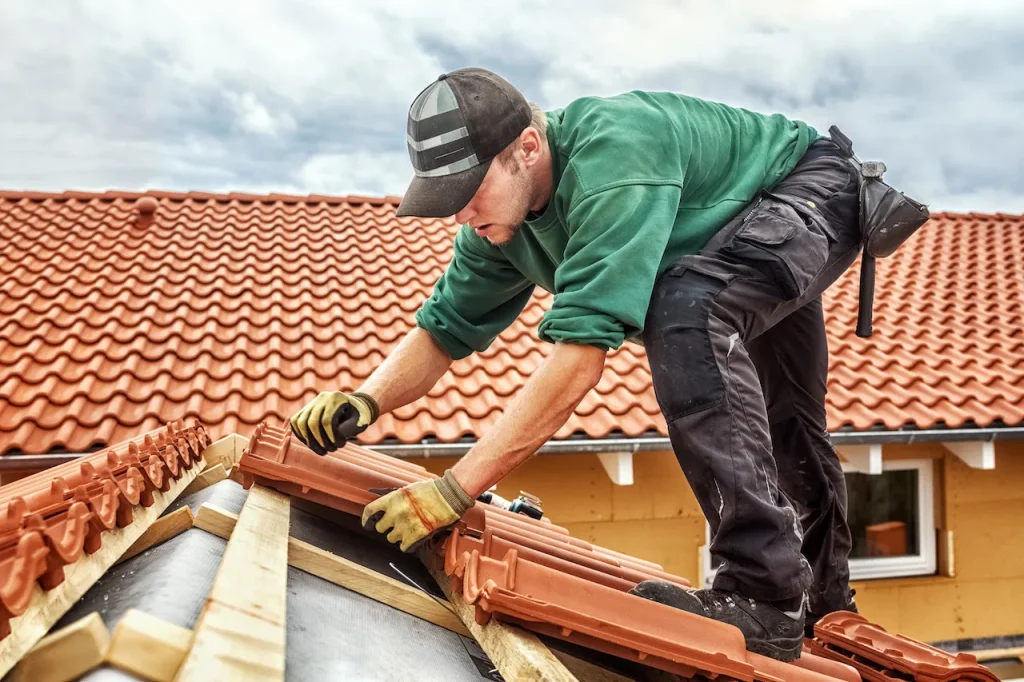
12. Decreased Property Value and Curb Appeal
A worn-out roof can negatively impact the professional appearance of your building and decrease its market value. If you’re planning to sell or lease your commercial property, investing in a new roof can boost curb appeal and signal to potential buyers or tenants that the building is well maintained.
13. Storm Damage
Cleveland experiences its fair share of snowstorms, heavy rain, and strong winds. Any significant weather event can take a toll on commercial roofing. After major storms, it’s important to have a professional inspection—even if there are no immediate leaks. Hail impacts, wind uplift, and ice dams can cause damage that isn’t immediately visible but can worsen over time.
Why Timing Matters
Waiting too long to replace your commercial roof can result in far more costly damage than a planned replacement. From ruined insulation to compromised structural supports, delaying replacement exposes your building and business to unnecessary risk. On the other hand, replacing your roof proactively can:
- Minimize business disruptions
- Improve energy efficiency
- Boost building value
- Offer peace of mind for years to come
Final Thoughts
Your roof is one of the most important components of your commercial building, and neglecting its health can result in significant damage and expense. By understanding and acting on the signs discussed above, you can avoid the risks associated with a failing roofing system. Whether your roof is aging, frequently leaking, or showing signs of structural stress, it might be time to consult professionals about a full replacement.
If you’re in need of expert assistance for commercial roofing Cleveland, don’t hesitate to reach out to trusted professionals. Atlas Roofing & Restoration is here to help with high-quality commercial roof replacement, repairs, and inspections tailored to the unique climate challenges of Northeast Ohio. Let us help protect your business with a roof you can depend on.

